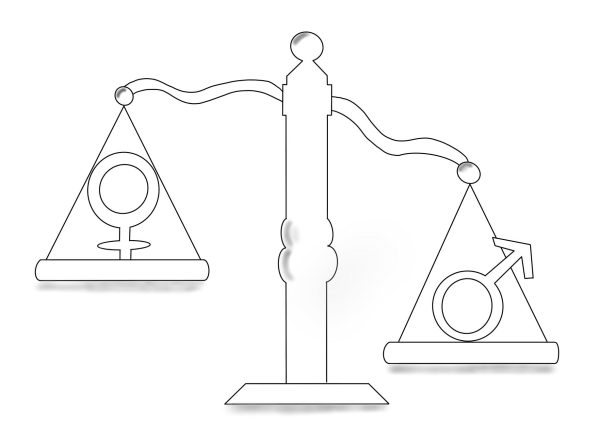Every year, the Marin County Athletic League (MCAL) championship boys’ basketball game occurs, attracting crowds from all over Marin. Students, teachers, parents, siblings, friends and even extended family members come to watch. Varsity cheerleaders hype up the crowd and t-shirts are handed out. Who doesn’t want to see the most exciting basketball game of the year, at prime time on a Friday night?
Even though this high school game brings the community together, a persistent issue has created a discrepancy in athletic attendance. If games are supposed to bring us together, it seems unfair that the girls’ varsity basketball team is consistently disregarded.
Although it may seem like a jumble of subtle differences, things are more unequal than one might think, and the girls’ varsity basketball team is just one example of the local and global gender imbalance. To combat this, Redwood needs to set an even scale between boys’ and girls’ games by changing game details, and as a whole, the community will be more inclined to attend games and support both genders.
One factor that points to inequality is the time slots given to these games. The definition of “prime time” is referred to by the Oxford Language Dictionaries as the regularly occurring few-hour-period in the evening when most people are expected to be watching. This is most commonly between the hours of 7-10 p.m. or 8-11 p.m. While the boys’ varsity basketball team is familiar with this time slot, the girls’ team has been given time slots that work around prime time rather than within it. Both teams played six out of eight MCAL games at home during January and February of the 2024 season. However, for the boys’ team, each of these games was at 7 or 7:30 p.m., during prime time. On the other hand, the girls’ games were all at 6 p.m., with the exception of one matinee game on a Saturday.

This is a pointed example of gender inequality in sports at Redwood. Women’s sports are routinely scheduled around men’s sports rather than with them, and this is evident in the gender split of allocated time slots. The girls shouldn’t have to play each of their games earlier than the boys and instead should share an equal amount of prime time slots.
Additionally, there is an inconsistency with regard to our cheer squads. The junior varsity cheerleaders cheered for every girls’ MCAL game, which is great, but don’t the varsity girls players deserve the spirit, hype, and elite acrobatics that accompany the varsity cheer squad?
However, the game times and the cheerleaders are not the only aspects that are to blame for the poor attendance. While these things are components that bring crowds, it’s also on the community to support all Redwood sports teams. If this isn’t a community that builds up and supports all people regardless of gender, it’s not fair to truly call that a community, or at least a welcoming one. We should all put in a better effort to attend not only boys’ games but also girls’ games and cheer enthusiastically for both.
This lack of support is especially concerning considering how far the girls’ team has progressed this season. The team had seven wins during the MCAL season, won North Coast Section (NCS) in Division II and got to the second round of Northern California (NorCal) Division II. Meanwhile, the boys’ team had six wins and two losses during the MCAL season and lost in the first round of NCS Division II. This provides evidence of why the girls’ team is more than worthy of our support, and the praise that they’ve received from our community has been severely underwhelming.
According to the March Bark survey, 65 percent of students are more likely to attend a boys’ sports game instead of a girls’ sports game at Redwood. Evidently, going to a high school basketball game can be an opportunity to socialize and have fun, and missing out could defeat the whole purpose. I love going to games because there are always peers and fun people to talk to, whom I might not see outside of school. However, I’m also really busy, as is the community. I may not have time to go see two, two-hour games in one day, but if we as a community don’t try to go to a girls’ game, the inequality will never improve, and we will be stuck in an endless loop of poor attendance at girls’ games.
Thus, a few ways to increase support for the girls’ varsity basketball team are to change game times, have the varsity cheerleaders cheer for their games and work as a community to attend more games. This team of accomplished varsity athletes deserves a greater level of support than we have provided them thus far.







